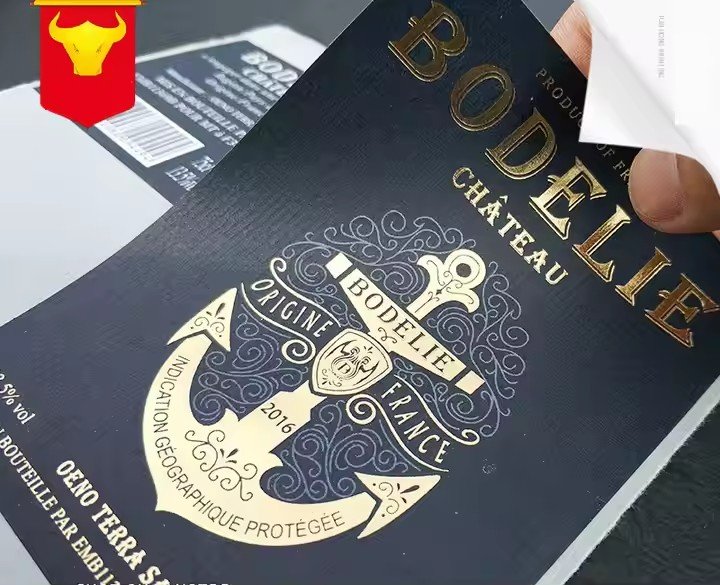- Native Natural Landscapes: Conveying Local Authenticity and Purity
Australia’s distinctive natural scenery serves as an irreplaceable visual symbol. By extracting iconic landscape elements and rendering them in minimalist or abstract illustration styles, designs can highlight product origin while maintaining a refined, premium tone.
Simplified Landmark Imagery:
Transform landmarks such as Uluru, the Great Barrier Reef, and the Blue Mountains into linear illustrations.
For example:
On fish oil packaging, use gradient blue lines to outline the layered ocean tones of the Great Barrier Reef, paired with a white background to evoke the purity of deep-sea ingredients.
On propolis packaging, use warm yellow gradient lines to depict sunrise over Uluru, symbolizing ingredients sourced from Australia’s pristine inland regions.
Integration of Natural Light Effects:
Incorporate visual effects such as “sunlight refraction” or “morning mist.”
For instance, vitamin packaging can feature soft golden light filtering through green leaves, representing Australia’s abundant sunshine and conveying warmth and vitality.
Design Tip:
Avoid overusing realistic photographs (which can look cheap). Instead, use abstract simplification and low-saturation natural tones (light blue, off-white, pale green) to align with high-end supplement aesthetics.

- Iconic Flora and Fauna: Highlighting Natural and Unique Ingredients
Australia’s native plants and animals are key differentiators for its health supplements. Integrating them into graphics can serve as “natural authenticity symbols”, reinforcing ingredient origins and boosting memorability.
Botanical Realism:
For products featuring ingredients like Manuka honey, tea tree oil, or Kakadu plum, use delicate botanical illustrations:
Manuka honey: fine brown line drawings of Manuka flowers with subtle honeycomb textures, emphasizing ingredient authenticity and premium quality.
Kakadu plum (rich in Vitamin C): depict plump fruits with orange-red gradients to visually express freshness and nutrition.
Animal Symbolism:
For animals like kangaroos or koalas, there’s no need for full illustrations — abstract their distinctive features as design accents:
On children’s supplements, simplify koala ears into round shapes paired with leaf elements, creating a cute, Australian feel.
On fish oil products, outline a dolphin’s sleek silhouette with minimalist lines, symbolizing ocean purity and vitality.
Advanced Concept:
Combine fauna/flora with product function.
For joint health supplements, depict a jumping kangaroo in motion with abstract cartilage patterns to express both “Australian identity” and “joint strength.”
II. Functional Visualization: Helping Consumers Quickly Grasp the Core Value
The core purpose of supplements is to address health concerns. Graphic design should use intuitive visual cues to let consumers understand the product’s benefits within three seconds, avoiding overly complex or abstract imagery.
Ingredient Visualization: Reducing Cognitive Load
Highlight key ingredients using enlarged illustrations + minimalist text combinations, making them the focal point of the design.
Nutrient Illustration:
For Vitamin C, depict an enlarged orange slice with juicy gradient tones of orange and yellow, accompanied by simple text like “High in VC.”
For calcium tablets, show milk droplets forming around bone outlines in white and light grey to visualize the “strong bones” benefit.
Herbal Simplification:
For herbal products (e.g., curcumin, St. John’s wort), illustrate only key plant parts (roots, leaves) with clean linework.
Fill the interior with colors linked to their function — warm yellow for curcumin (soothing), soft purple for St. John’s wort (calming) — combining natural origin with emotional color coding.
Functional Scenarios: Evoking Emotional Resonance
Connect product benefits with everyday scenarios using clean, symbolic graphics — avoid literal anatomical drawings.
Daily Life Scenes:
For sleep aids, illustrate a bedroom under moonlight in soft blue gradients to express calm restfulness.
For energy boosters, show a sunrise runner outlined in orange lines to convey vitality and awakening.
Body State Symbolism:
For eye health products, use an eye-shaped gradient filled with blueberry and lutein illustrations to represent both ingredients and “clear vision.”
For gut health supplements, use spiral lines (mimicking intestines) combined with circular probiotic icons to suggest “microbiome balance and improved digestion.”

III. Target Group Adaptation: Matching Visual Style to Audience Preferences
Different age groups and lifestyles show distinct aesthetic preferences. Design should align with audience psychology to enhance emotional connection and purchase intent.
Young Consumers: Trendy and Individualized Design
For the 25–35 age group — image-conscious and style-driven — design should integrate trendy aesthetics while retaining clarity and functionality.
Fashion-forward Visuals:
Use geometric collages, gradient washes, and soft transitions.
For collagen products, blend pink and white gradients with subtle hexagonal patterns — feminine, anti-aging, and stylish.
For men’s fitness supplements, adopt black-grey color schemes with abstract muscle-line graphics to convey strength, focus, and professionalism.


